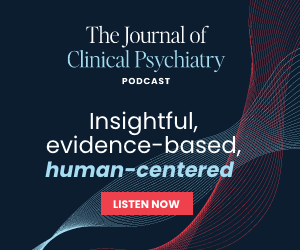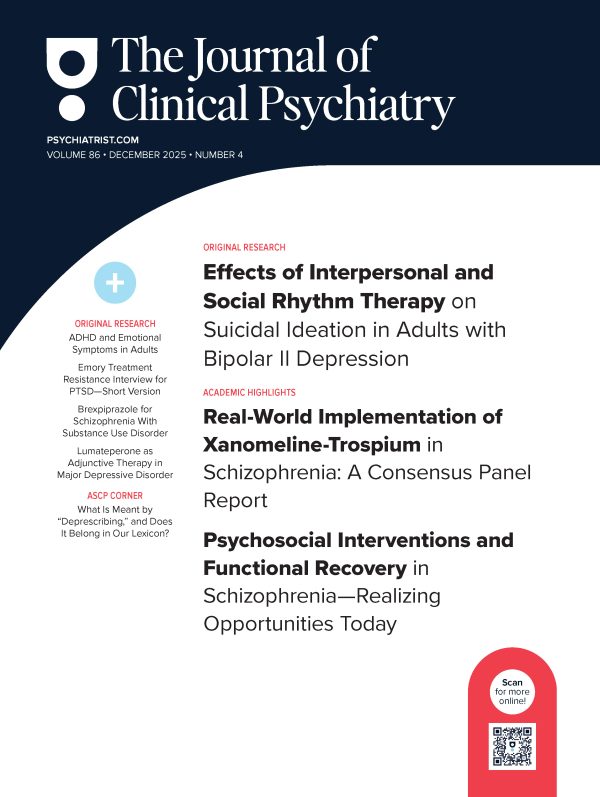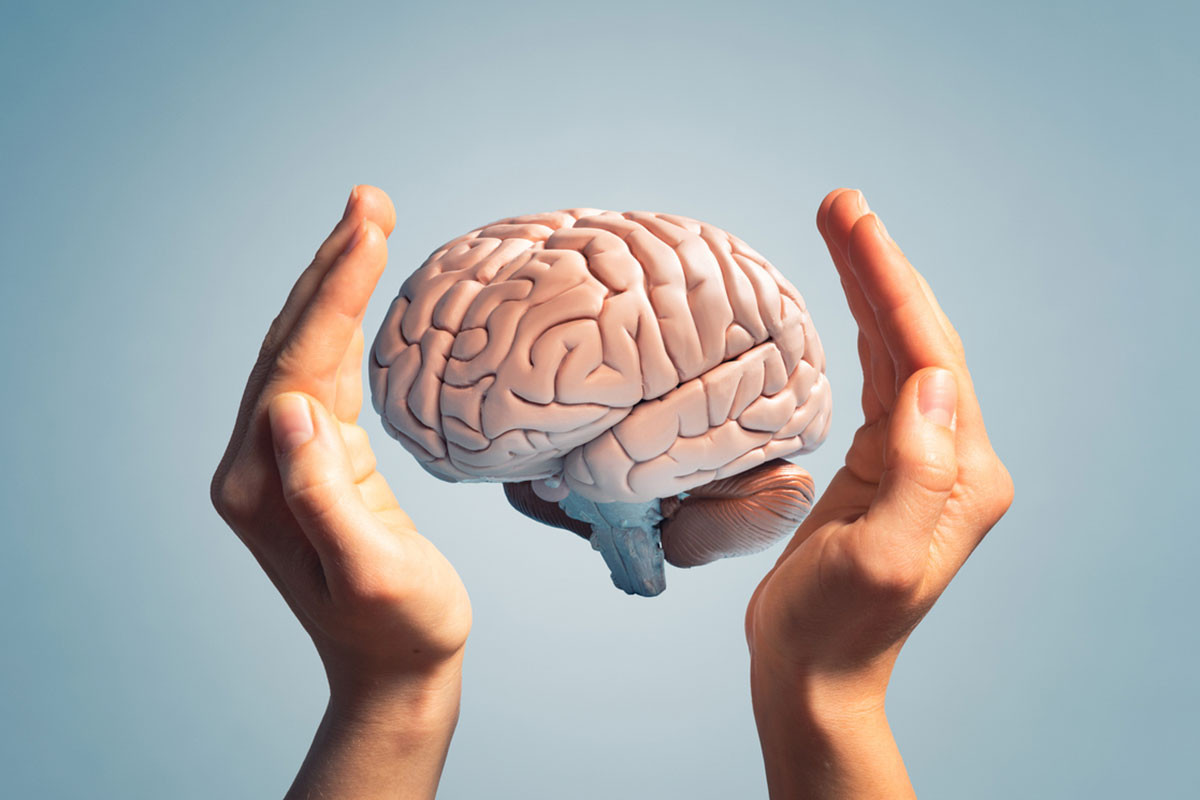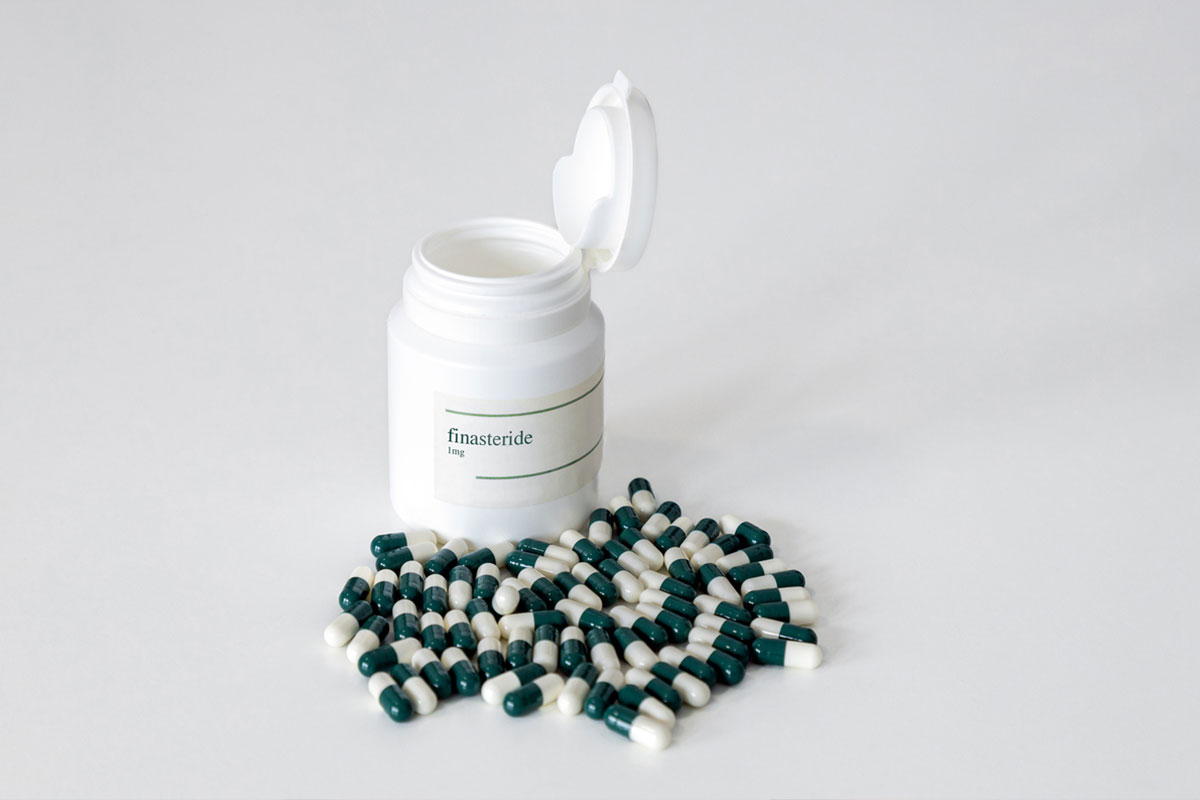Abstract
Objective: Adolescents with a history of depression are at a high risk of recurrent suicidal ideation (SI) and attempts. To enhance risk prediction, we examined the association of individual residual symptoms of depression to suicidal events (suicide attempts, emergency room visits, and inpatient hospitalization) 6 months after discharge from treatment.
Methods: A retrospective post hoc analysis of patients aged 12–18 years examined depression symptoms at admission and discharge. Patients in an intensive treatment program (December 2013–September 2022) received psychosocial and medication management. The Quick Inventory of Depressive Symptomatology, Adolescent Version, assessed depressive symptoms at entry and discharge (n = 1,029), and suicidal events postdischarge were tracked (n = 736). Analysis of variance analyzed symptom severity changes, and logistic regression used residual symptoms and controls (age, sex, previous attempt, and nonsuicidal self-injury) to predict suicidal events.
Results: Sad mood, view of self, and SI improved the most, while mood and sleep disturbance were most prevalent at discharge. Sleep disturbance (odds ratio [OR] = 2.09, 95% CI, 1.24–3.53, P < .01) and SI (OR = 2.22, 95% CI, 1.26–3.90, P < .01) were the strongest predictors of hospitalization, and, together with anhedonia (OR = 1.40, 95% CI, 1.02–1.93, P < .05), they consistently predicted suicidal events during follow-up.
Conclusion: Residual sleep disturbance, SI, and anhedonia after treatment indicated risk post discharge and might inform continuity of care planning. These findings encourage further research about the relationships between specific residual symptoms and suicidal events.
J Clin Psychiatry 2025;86(3):24m15462
Author affiliations are listed at the end of this article.
Members Only Content
This full article is available exclusively to Professional tier members. Subscribe now to unlock the HTML version and gain unlimited access to our entire library plus all PDFs. If you’re already a subscriber, please log in below to continue reading.
References (48)

- WHO. Suicide Worldwide in 2019: Global Health Estimates. World Health Organization; 2021. Accessed March 5, 2025. https://www.who.int/publications/i/item/9789240026643.
- CDC. Centers for Disease Control and Prevention: Suicide Data and Statistics. Centers for Disease Control and Prevention; 2024. Accessed March 5, 2025. https://www.cdc.gov/suicide/facts/data.html.
- Franklin JC, Ribeiro JD, Fox KR, et al. Risk factors for suicidal thoughts and behaviors: a meta-analysis of 50 years of research. Psychol Bull. 2017;143(2):187–232. PubMed CrossRef
- Al-Harbi KS. Treatment-resistant depression: therapeutic trends, challenges, and future directions. Patient Prefer Adherence. 2012;6:369–388. PubMed CrossRef
- Fekadu A, Rane LJ, Wooderson SC, et al. Prediction of longer-term outcome of treatment-resistant depression in tertiary care. Br J Psychiatry. 2012;201(5):369–375. PubMed CrossRef
- Israel JA. The impact of residual symptoms in major depression. Pharmaceuticals. 2010;3(8):2426–2440. PubMed CrossRef
- McClintock SM, Husain MM, Wisniewski SR, et al. Residual symptoms in depressed outpatients who respond by 50% but do not remit to antidepressant medication. J Clin Psychopharmacol. 2011;31(2):180–186. PubMed CrossRef
- Taylor DJ, Walters HM, Vittengl JR, et al. Which depressive symptoms remain after response to cognitive therapy of depression and predict relapse and recurrence? J Affect Disord. 2010;123(1-3):181–187. PubMed CrossRef
- Nierenberg AA, Husain MM, Trivedi MH, et al. Residual symptoms after remission of major depressive disorder with citalopram and risk of relapse: a STAR*D report. Psychol Med. 2010;40(1):41–50. PubMed CrossRef
- Iovieno N, van Nieuwenhuizen A, Clain A, et al. Residual symptoms after remission of major depressive disorder with fluoxetine and risk of relapse. Depress Anxiety. 2011;28(2):137–144. PubMed CrossRef
- Kennard B, Silva S, Vitiello B, et al. Remission and residual symptoms after short-term treatment in the treatment of adolescents with depression study (TADS). J Am Acad Child Adolesc Psychiatry. 2006;45(12):1404–1411. PubMed CrossRef
- Tao R, Emslie GJ, Mayes TL, et al. Symptom improvement and residual symptoms during acute antidepressant treatment in pediatric major depressive disorder. J Child Adolesc Psychopharmacol. 2010;20(5):423–430. PubMed CrossRef
- Busby Grant J, Batterham PJ, McCallum SM, et al. Specific anxiety and depression symptoms are risk factors for the onset of suicidal ideation and suicide attempts in youth. J Affect Disord. 2023;327:299–305. PubMed CrossRef
- Victor SE, Klonsky ED. Correlates of suicide attempts among self-injurers: a meta-analysis. Clin Psychol Rev. 2014;34(4):282–297. PubMed CrossRef
- Brent DA, Greenhill LL, Compton S, et al. The Treatment of Adolescent Suicide Attempters study (TASA): predictors of suicidal events in an open treatment trial. J Am Acad Child Adolesc Psychiatry. 2009;48(10):987–996. PubMed CrossRef
- King CA, Segal H, Kaminski K, et al. A prospective study of adolescent suicidal behavior following hospitalization. Suicide Life Threat Behav. 1995;25(3):327–338. PubMed CrossRef
- King CA, Berona J, Czyz E, et al. Identifying adolescents at highly elevated risk for suicidal behavior in the emergency department. J Child Adolesc Psychopharmacol. 2015;25(2):100–108. PubMed CrossRef
- Horwitz AG, Czyz EK, King CA. Predicting future suicide attempts among adolescent and emerging adult psychiatric emergency patients. J Clin Child Adolesc Psychol. 2015;44(5):751–761. PubMed CrossRef
- Prinstein MJ, Nock MK, Simon V, et al. Longitudinal trajectories and predictors of adolescent suicidal ideation and attempts following inpatient hospitalization. J Consult Clin Psychol. 2008;76(1):92–103. PubMed CrossRef
- Auerbach RP, Millner AJ, Stewart JG, et al. Identifying differences between depressed adolescent suicide ideators and attempters. J Affect Disord. 2015;186:127–133. PubMed CrossRef
- King CA, Grupp-Phelan J, Brent D, et al. Predicting 3-month risk for adolescent suicide attempts among pediatric emergency department patients. J Child Psychol Psychiatry. 2019;60(10):1055–1064. PubMed CrossRef
- Fried EI, Nesse RM. Depression sum-scores don’t add up: why analyzing specific depression symptoms is essential. BMC Med. 2015;13:72. PubMed CrossRef
- Kennard B, Mayes T, King J, et al. The development and feasibility outcomes of a youth suicide prevention intensive outpatient program. J Adolesc Health. 2019;64(3):362–369. PubMed CrossRef
- Bernstein IH, Rush AJ, Trivedi MH, et al. Psychometric properties of the Quick inventory of depressive Symptomatology in adolescents. Int J Methods Psychiatr Res. 2010;19(4):185–194. PubMed CrossRef
- Haley CL, Kennard BD, Morris DW, et al. The Quick inventory of depressive Symptomatology, adolescent version (QIDS-A(17)): a psychometric evaluation. Neuropsychiatr Dis Treat. 2023;19:1085–1102. PubMed CrossRef
- Norman G. Likert scales, levels of measurement and the “laws” of statistics. Adv Health Sci Educ Theor Pract. 2010;15(5):625–632. PubMed CrossRef
- Posner K, Brown GK, Stanley B, et al. The Columbia-Suicide Severity Rating Scale: initial validity and internal consistency findings from three multisite studies with adolescents and adults. Am J Psychiatry. 2011;168(12):1266–1277. PubMed CrossRef
- Courtet P, Nobile B, Guillaume S, et al. An urgent need for rapid anti-suicidal drugs. In: French Journal of Psychiatry. Elsevier;2020:1–4. CrossRef
- Leucht S, van Os J, Jäger M, et al. Prioritization of psychopathological symptoms and clinical characterization in psychiatric diagnoses: a narrative review. JAMA psychiatry. 2024;81(11):1149–1158. PubMed CrossRef
- Kalmbach DA, Cheng P, Ahmedani BK, et al. Cognitive-behavioral therapy for insomnia prevents and alleviates suicidal ideation: insomnia remission is a suicidolytic mechanism. Sleep. 2022;45(12):zsac251. PubMed CrossRef
- Lam RW, Tam EM, Shiah IS, et al. Effects of light therapy on suicidal ideation in patients with winter depression. J Clin Psychiatry. 2000;61(1):30–32. PubMed CrossRef
- Cipriani A, Hawton K, Stockton S, et al. Lithium in the prevention of suicide in mood disorders: updated systematic review and meta-analysis. Bmj. 2013;346:f3646. PubMed CrossRef
- Grunebaum MF, Galfalvy HC, Choo T-H, et al. Ketamine for rapid reduction of suicidal thoughts in major depression: a midazolam-controlled randomized clinical trial. Am J Psychiatry. 2018;175(4):327–335. PubMed CrossRef
- Canuso CM, Singh JB, Fedgchin M, et al. Efficacy and safety of intranasal esketamine for the rapid reduction of symptoms of depression and suicidality in patients at imminent risk for suicide: results of a double-blind, randomized, placebo-controlled study. Am J Psychiatry. 2018;175(7):620–630. PubMed CrossRef
- Alavi A, Sharifi B, Ghanizadeh A, et al. Effectiveness of cognitive-behavioral therapy in decreasing suicidal ideation and hopelessness of the adolescents with previous suicidal attempts. Iran J Pediatr. 2013;23(4):467–472. PubMed
- Mehlum L, Tørmoen AJ, Ramberg M, et al. Dialectical behavior therapy for adolescents with repeated suicidal and self-harming behavior: a randomized trial. J Am Acad Child Adolesc Psychiatry. 2014;53(10):1082–1091. PubMed CrossRef
- Raj S, Sachdeva SA, Jha R, et al. Effectiveness of mindfulness based cognitive behavior therapy on life satisfaction, and life orientation of adolescents with depression and suicidal ideation. Asian J Psychiatr. 2019;39:58–62. PubMed CrossRef
- Vinckier F, Gourion D, Mouchabac S. Anhedonia predicts poor psychosocial functioning: results from a large cohort of patients treated for major depressive disorder by general practitioners. Eur Psychiatry. 2017;44:1–8. PubMed CrossRef
- Spijker J, Bijl RV, de Graaf R, et al. Determinants of poor 1-year outcome of DSM-III-R major depression in the general population: results of The Netherlands Mental Health Survey and Incidence Study (NEMESIS). Acta Psychiatr Scand. 2001;103(2):122–130. PubMed CrossRef
- McMakin DL, Olino TM, Porta G, et al. Anhedonia predicts poorer recovery among youth with selective serotonin reuptake inhibitor treatment-resistant depression. J Am Acad Child Adolesc Psychiatry. 2012;51(4):404–411. PubMed CrossRef
- Uher R, Perlis RH, Henigsberg N, et al. Depression symptom dimensions as predictors of antidepressant treatment outcome: replicable evidence for interest-activity symptoms. Psychol Med. 2012;42(5):967–980. PubMed CrossRef
- Winer ES, Nadorff MR, Ellis TE, et al. Anhedonia predicts suicidal ideation in a large psychiatric inpatient sample. Psychiatry Res. 2014;218(1-2):124–128. PubMed CrossRef
- Ducasse D, Loas G, Dassa D, et al. Anhedonia is associated with suicidal ideation independently of depression: a meta-analysis. Depress Anxiety. 2018;35(5):382–392. PubMed CrossRef
- Cai H, Li ZL, He F, et al. Suicide ideation and anhedonia among clinically stable adolescents with the recurrent depressive disorder during the COVID-19 pandemic: a network perspective. J Affect Disord. 2023;324:317–324. PubMed CrossRef
- Pirkis J, Dandona R, Silverman M, et al. Preventing suicide: a public health approach to a global problem. Lancet Public Health. 2024;9(10):e787–e795. PubMed CrossRef
- Fu T, Liu H, Chen C, et al. Preventing post-discharge suicides in psychiatric patients: insights from patients, lay healthcare supporters, and mental health professionals—a qualitative analysis. BMC public health. 2024;24(1):64. PubMed CrossRef
- Richardson T, Elliott P, Roberts R. The relationship between personal unsecured debt and mental and physical health: a systematic review and meta-analysis. Clin Psychol Rev. 2013;33(8):1148–1162. PubMed CrossRef
- Calati R, Ferrari C, Brittner M, et al. Suicidal thoughts and behaviors and social isolation: a narrative review of the literature. J Affect Disord. 2019;245:653–667. PubMed CrossRef






